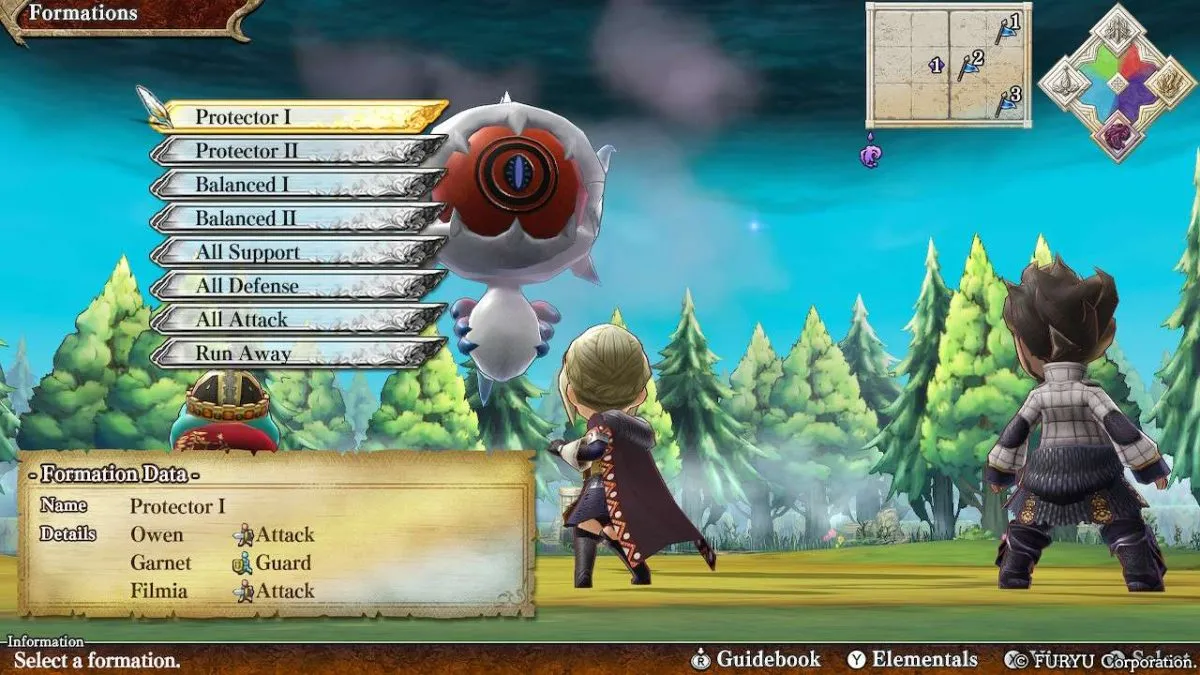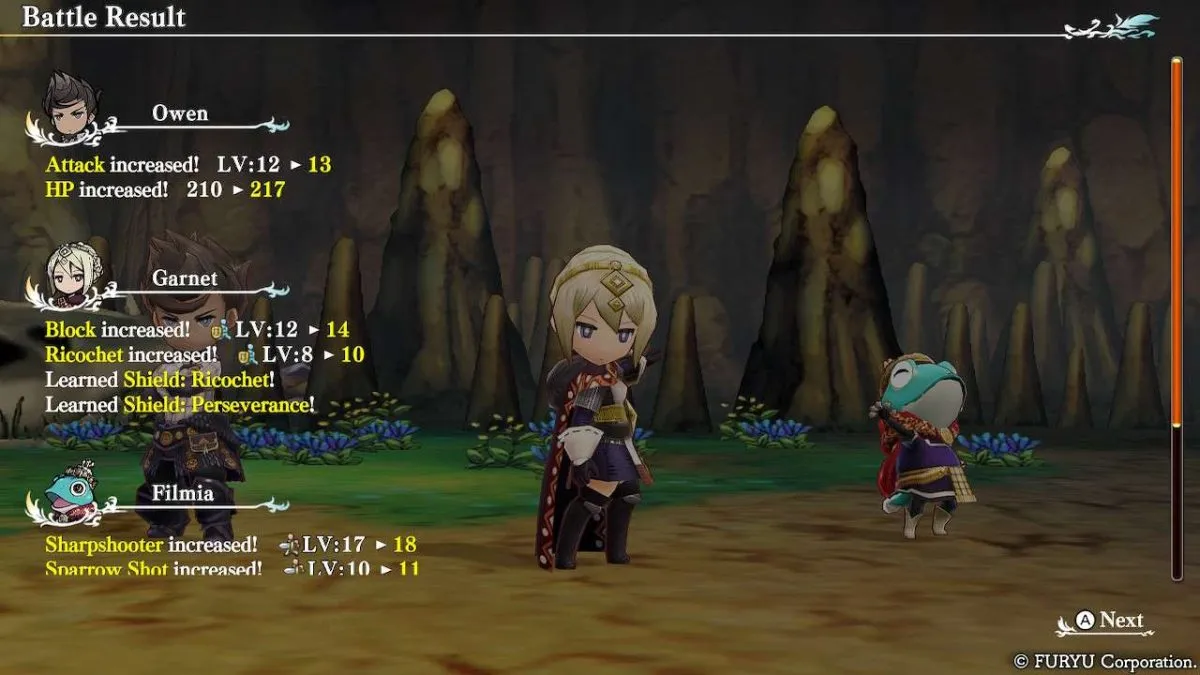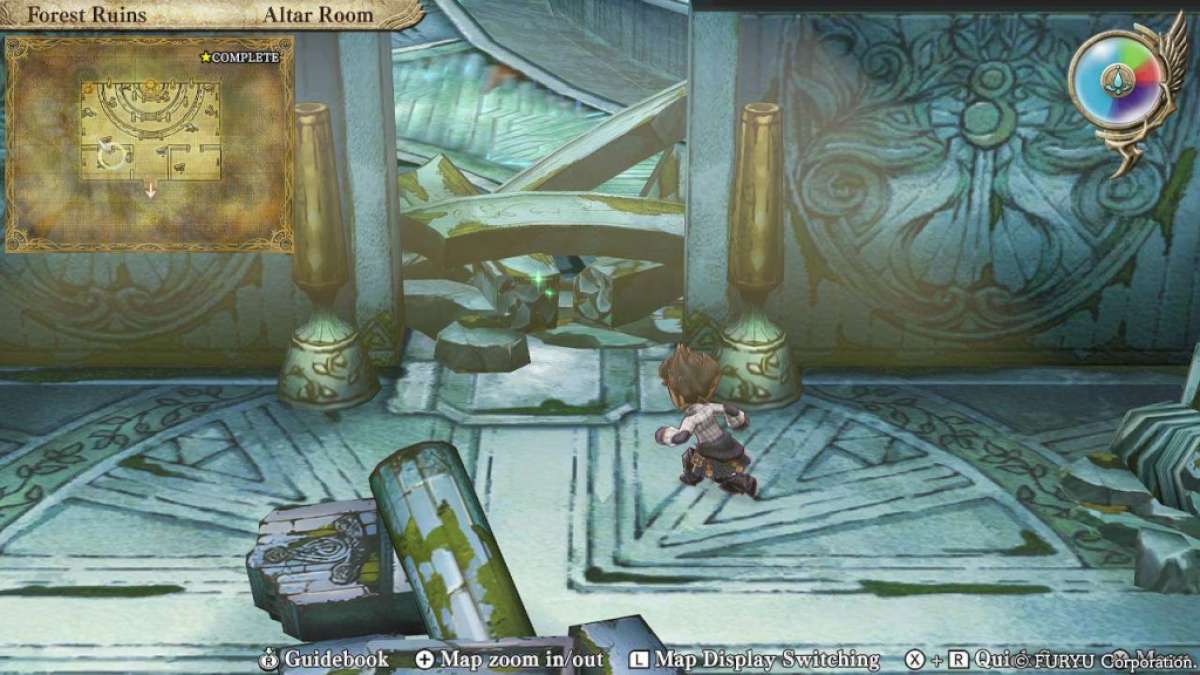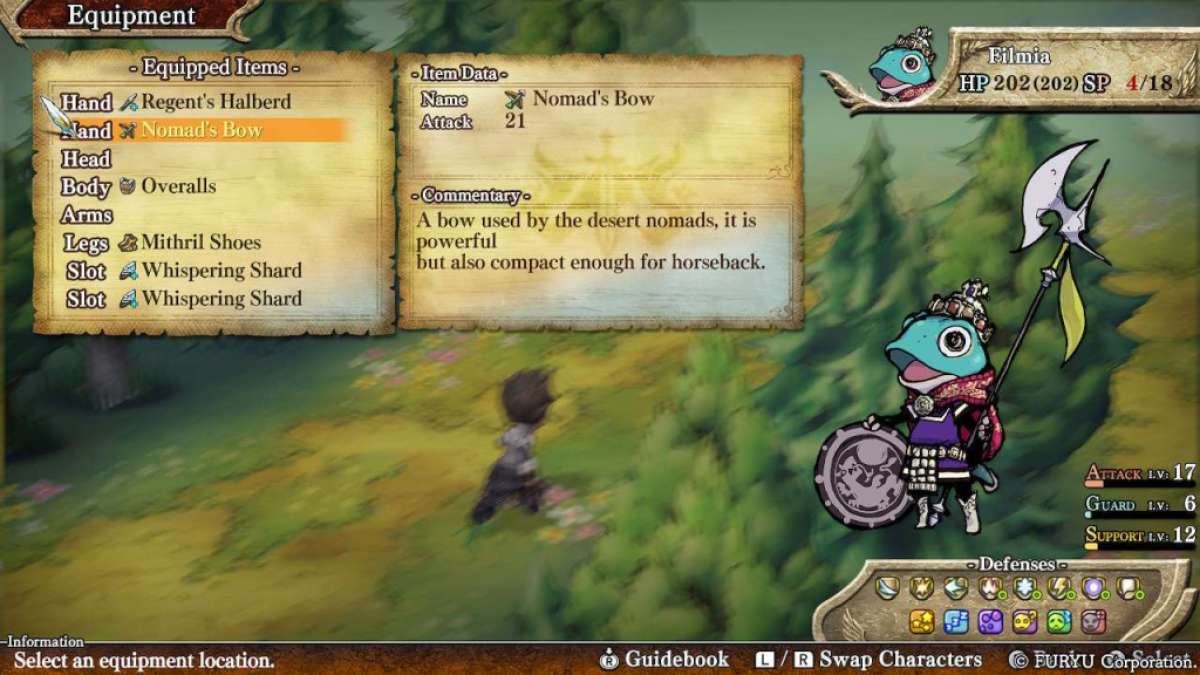I have loved The Legend of Legacy since I first played it on the Nintendo 3DS back in 2016. Even though I never managed to beat it back then, I remember having a lot of fun with it. However, it wasn’t until replaying The Legend of Legacy HD Remastered that I remembered why I struggled to finish it in the first place. While the game remains fun and FuRyu implemented a lot of interesting ideas, the systems present are very obtuse. This new remaster is a missed opportunity to course correct some of these decisions and make the game a bit more accessible.
The Legend of Legacy HD Remastered is set in the island of Avalon, a land inhabited by monsters that was discovered 10 years before the start of the game. At the outset, players choose one of 7 protagonists. Each one has their own reasons to travel to Avalon that are tied to the ancient civilization that inhabited the island, along with mysterious legends of the Star Graal. Likewise, every character has their own ending. So if you want to see them all, you’ll have to play the game several times. While you definitely don’t need to do this to understand the plot, it’s a nice touch for those wanting to replay the game.
While the story is interesting, the plot in The Legend of Legacy is rather sparse, and most of the playtime is concentrated in exploring Avalon and fighting. Each protagonist starts the game with 2 other characters, but you can change your party in the town of Initium after talking and recruiting the 4 party members. Characters in your party offer color commentary during all important scenes. This detail helps keeps a consistent feeling of camaraderie within the party, and helps display their personalities.

Exploration and combat is where the bulk of the experience lies. Combat is fought in a turn-based system using a team of three party members. First, players select one of their prepared Formations, and then select each character’s action. The roles in each Formation determine how effective certain actions are, and which stat they can level up. Formations are an interesting way of encouraging character growth and creating your own “classes,” by making each character grow in their respective roles the more you use them. If you’ve played or know about The Alliance Alive this system is a somewhat stripped-down version of it.
While combat itself is pretty straightforward, leveling is confusing and unintuitive. Characters have five main stats: HP, SP, Attack, Guard, and Support. HP and SP have a chance of randomly leveling up after every fight. Meanwhile, Attack, Guard and Support can increase depending on the stance and actions each character used in a fight. To make matters worse, each move has its own independent Attack, Guard, and Support stats tied to them that can level up when you use them in the respective stance. What the Attack and Guard stats do is self-explanatory, while Support influences turn order. Having various balanced formation for different scenarios is important not only for succeeding in fights, but for keeping your character’s stance and move levels balanced properly. As you can imagine, the almost random nature of leveling can inflate the duration of the game by adding some grinding. While fighting stronger enemies usually makes level ups prompt easier, it is still a roll of the die.

Weapons and moves work similar to skills in the SaGa series. Special moves and Spells can be cast spending SP. Moves are learned randomly by Awakening when using a particular move, and each weapon has several different moves. Equipping your characters with balanced equipment is important to avoid getting walled by an enemy that might resist a particular type of damage. Water, Air, and Fire Singing Shards and charms provide elemental contracts that allow characters to cast spells of the corresponding element, along with passive buffs like HP and SP regen. These can be equipped and used by every character.
Spells can also be learned the same was as moves, except you have to cast spells until Awakening them, although this is not evident nor explained at any point. Additionally, some characters can only learn some elements, which can prove tricky when deciding who to give charms. While there is an in-game manual, it barely touches on how these systems work, and keeps the player in the dark on some details that I consider to be essential in order to succeed in the game. The remaster was the chance to improve on these aspects and the overall experience, but as it stands it remains a somewhat stubborn game.

For my playthrough, I picked Owen as protagonist, as he is powerful close quarters fighter that excels in attacking and guarding. He was accompanied by Garnet, another strong attacker with defensive capabilities, and Filmia, a support attacker with decent speed. While you can change party members in Initium, I decided to stick with this group throughout my entire playthrough, as changing it would have put me back a few hours in order to catch up to the rest of the party. I would recommend doing the same for anyone getting into the game, and then trying other teams in New Game+ if they’re curious to see other character stories and trying new combinations.
The visuals in The Legend of Legacy HD Remastered are really beautiful. While it is quite obvious that it originally was a Nintendo 3DS game, the chibi style of the character models looks really good, and perfectly suits the art style and environments. There are some very rare moments where the resolution in some backgrounds is a bit low, but other than that the game maintains a very strong aesthetic. If I have any criticism of the presentation is that the stylized pop-in of the environments remains a bit jarring, even more so when playing on a big screen. The music in The Legend of Legacy HD Remastered is flawless. Final Fantasy XIII Composer Masashi Hamauzu provided his signature style for the soundtrack, and it is evident throughout the score. The main battle theme in particular is very reminiscent of FFXIII, and it never gets old. For a song that you get to hear a lot, this is very important.

I still love The Legend of Legacy HD Remastered. I wished this new release could have fixed some of my gripes with the original game. While it can be an obtuse and stubborn game to learn, once you get past this you are met with a pretty and charming world, as well as a strategic combat system with some interesting ideas. The best thing going on for the remaster is that it makes accessible an 8-year-old game that was trapped on the Nintendo 3DS. For fans of the SaGa series this is a must.
The Legend of Legacy HD Remastered will come out on March 22, 2024 for the Nintendo Switch, PS4, PS5, and PC via Steam.
Take charge of your tale in The Legend of Legacy HD Remastered! Join seven adventurers as they explore the mysterious land of Avalon while pursuing their own unique journey. Nintendo Switch version reviewed. Review copy provided by company for testing purposes.
The Legend of Legacy HD Remastered offers a fun and strategic RPG combat system that can be obtuse and grindy.
- Running away is guaranteed, but will move you back to the entrance of the current map or dungeon. Getting into a normal fight and running away is a great way of "fast travelling" back to Initium when in need.
- To revive characters in fight all you need to do is heal them with a support item or a spell. They will however revive with a max HP penalty until they rest in Initium.
- Make use of the merchant ships for a chance to get powerful items early on. Additionally, resting in Initium will sometimes make new items appear in the store.
- Beware of poor visibility zones. While grinding here can be very fruitful you can also get a really bad walloping from high level enemies.


Published: Mar 15, 2024 2:00 PM UTC